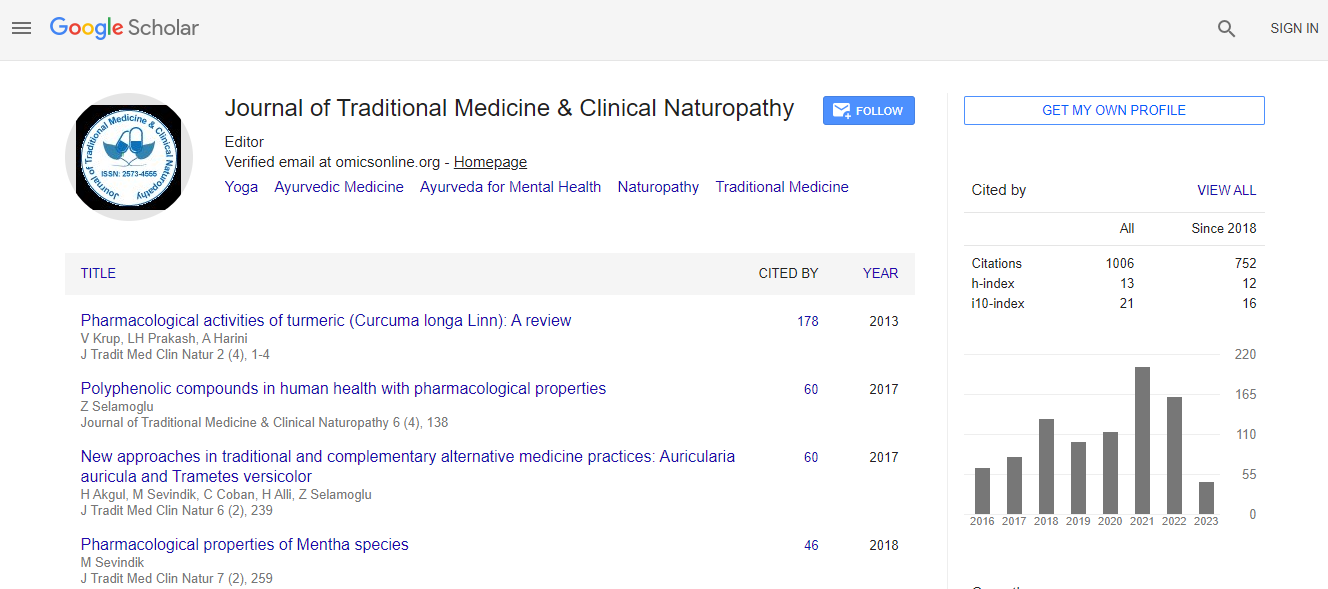Our Group organises 3000+ Global Conferenceseries Events every year across USA, Europe & Asia with support from 1000 more scientific Societies and Publishes 700+ Open Access Journals which contains over 50000 eminent personalities, reputed scientists as editorial board members.
Open Access Journals gaining more Readers and Citations
700 Journals and 15,000,000 Readers Each Journal is getting 25,000+ Readers
Google Scholar citation report
Citations : 1504
Journal of Traditional Medicine & Clinical Naturopathy peer review process verified at publons
Indexed In
- CAS Source Index (CASSI)
- Google Scholar
- Sherpa Romeo
- Open J Gate
- Genamics JournalSeek
- RefSeek
- Directory of Research Journal Indexing (DRJI)
- Hamdard University
- EBSCO A-Z
- Publons
- Geneva Foundation for Medical Education and Research
- Euro Pub
- ICMJE
Useful Links
Recommended Journals
Related Subjects
Share This Page
Binaural beat technology: Can an auditory neurophysiologic technique positively affect the cardiovascular stress response?
6th International Conference and Exhibition on Traditional & Alternative Medicine
MeLisa Gantt
Landstuhl Regional Medical Center, Germany
ScientificTracks Abstracts: J Tradi Med Clin Natur
Abstract
Binaural Beat Technology (BBT) is an auditory neurophysiologic technique which uses auditory tones (often embedded in music) dichotically via stereo headphones to manipulate brainwave activity. Using the Monroe Institute√ʬ?¬?s Hemi-Sync technology, a double-blinded, randomized, repeated measure study was conducted to assess the effect of BBT (in the theta brainwave frequency) on the cardiovascular (CV) stress response. A sample of 74 United States military service members (age 22-61) with complaint of post deployment anxiety was randomly divided into two groups (music with BBT and music without BBT). Each group was exposed to their respective intervention for a minimum of 30 minutes at bedtime, three times a week, for a total of four weeks. Participants underwent pre and post 20-minute heart rate variability tests to assess the effect of using the technology. A 2x2 mixed Analysis of Variance was conducted and found a statistical significant difference (F(1, 63) = 7.56, p=0.008 (√?¬∑2=0.107) in the low frequency HRV measures, whereas the Music with BBT group showed a decrease while the Music Only group showed an increase (Pre = 77.83, Post = 75.33 vs. Pre = 66.42, Post = 74.41). A statistical significant difference was also found in the high frequency HRV measures (F(1, 63) = 7.56, p = .008 (√?¬∑2 = .107) whereas the Music with BBT group showed an increase while the Music Only group showed a decrease (Pre = 22.17, Post = 24.67 vs. Pre = 33.58, Post = 25.94). Finally, the Music Only group showed a significant decrease (F (1, 57) = 4.39, p = .041 (√?¬∑2 = .072) in Total Power HRV measures when compared to the Music with BBT group (Pre = 2098.90; Post = 985.26 vs. Pre=1249.75; Post=1223.07).Biography
MeLisa Gantt is the Director for the Center for Nursing Science & Clinical Inquiry at Landstuhl Regional Medical Center and the Human Protections Administrator for US Army Regional Health Command Europe. She received her PhD from the University of Central Florida and is a certified Operating Room Nurse and RN First Assist. She has served as the Deputy Director for the Joint Combat Casualty Research Team in Afghanistan, Director of Research for Fort Belvoir Community Hospital in Virginia and Nurse Scientist for the Walter Army Medical Center in Washington, DC.
Email: melisa_gantt@msn.com

 Spanish
Spanish  Chinese
Chinese  Russian
Russian  German
German  French
French  Japanese
Japanese  Portuguese
Portuguese  Hindi
Hindi 
